Child Passenger Safety
To find out more about the Child Passenger Safety program please contact Safety Kids Baltimore 410-328-7532 or email the coordinator khardingham@umm.edu.
Due to pandemic restrictions were are currently unable to conduct in person car seat checks. In the meantime, appointments can be made for virtual car seat assistance with MD Kids in Safety Seats.
Child Passenger Safety Law
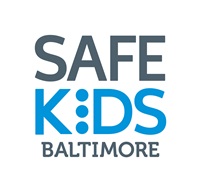
Maryland's Child Passenger Safety Law since 2008:
- Every child under 8 years old must ride in a booster seat or other appropriate child safety seat. Child safety seat includes infant seats, convertible seats, forward facing seats, booster seats or other federally approved safety devices.
- Every child from 8 to 16 years old who is not secured in a car seat must be secured in the vehicle's seat belt.
Protect your child as they ride! The back seat is the safest. Children under 13 years old should ride in the back seat.
For more information, please call Maryland Kids in Safety Seats (KISS) at 1-800-370-SEAT or 410-767-6016. Or visit them online at www.mdkiss.org.
Visit Sake Kids Worldwide for The Ultimate Car Seat Guide to figure out which seat best meets your child's needs.
Rear-Facing Car Seats
Babies and toddlers ride rear-facing.
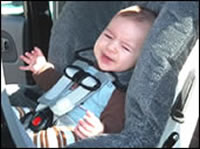
When they outgrow their infant carrier they can ride rear-facing in a convertible seat. Keep children rear-facing until they reach the rear-facing weight or height limit of their convertible car seat.
Forward-Facing Car Seats
Preschoolers ride in a forward-facing car seat with a harness until they reach the seat's forward-facing height and weight limit. See label on seat.
This includes convertible seats and combination toddler booster seats with a harness.
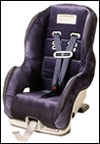 |
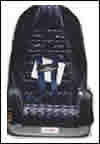 |
|
Convertible Seat |
Toddler/Booster Seat |
Booster Seats
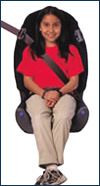
Your child is ready for a booster seat when, they outgrow the height or weight limit of their harness in their convertible or forward facing only car seat, and are able to sit still in the booster seat using the lap and should belt. Children are safer & should remain in the 5 point harness as long as possible. Don’t be too quick to move out of the harness into a booster. The general age recommendation is also for them to be closer to 5yrs old & >40 lbs. (preferably closer to the weight limit of their car seat with the harness).
Booster seats help position your child so the lap/shoulder seat belt fits them correctly. With a booster seat, the lap belt fits over their hips and touches the top of their legs and the shoulder belt is centered on the shoulder and chest and not across their face and neck.
When is my child ready to ride without a booster seat?
Take the 5-Step Test*:
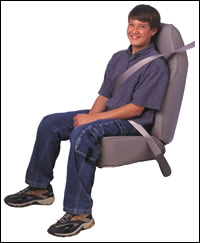 (Have your child sit in the car using the lap/shoulder belt without their
booster seat to take the test)
(Have your child sit in the car using the lap/shoulder belt without their
booster seat to take the test)
- Does your child sit all the way back with hips against the auto seat?
- Do your child's knees bend comfortably at the edge of the auto seat?
- Does the shoulder belt cross the shoulder between the neck and the arm?
- Is the lap belt as low on the hips as possible and touching the thighs?
- Can the child stay seated like this for the whole trip?
If you answered "no" to any of these questions, then your child still needs to use a booster seat to ride safely in the car.
Seat belts do not usually fit kids safely until they are 4"9' tall, weigh about 80 pounds and are about 8-12 years old.
The back seat is the safest place to ride. Children should ride in the back seat until they are at least 13 years old!
*5-Step Test taken from SafetyBeltSafe USA
